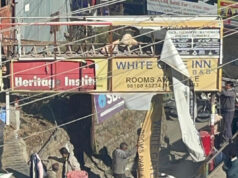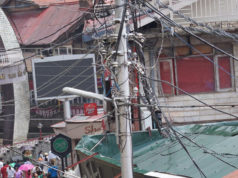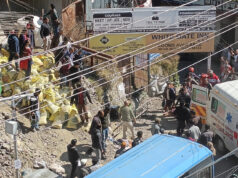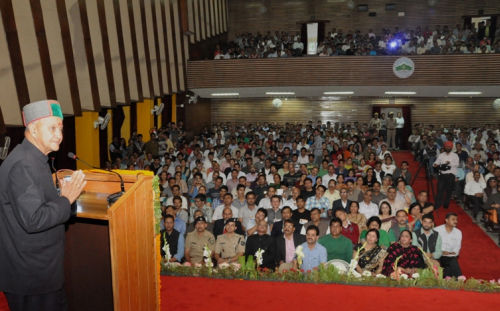Vikramaditya Singh takes strong measures to remove visual clutter, emphasizing the need to preserve Shimla’s historic charm.
Shimla — The picturesque city of Shimla, once celebrated for its serene landscapes and colonial architecture, is now facing a growing crisis of visual pollution. The rapid pace of urbanization, coupled with unplanned and haphazard development, has led to a surge in visual clutter, significantly detracting from the city’s natural beauty and historic appeal.
Visual pollution in Shimla has manifested in various forms, from the tangled mesh of wires that crisscross the city’s skyline to the proliferation of billboards and poorly maintained buildings. This unsightly clutter has diminished the aesthetic appeal of the “Queen of Hills” and raised concerns about its impact on public health and the city’s economy, which heavily relies on tourism.
Public Works and Urban Development Minister Vikramaditya Singh has taken note of this pressing issue. During a meeting with officials from the Municipal Corporation Shimla and the Urban Development Department, Singh expressed his concern over the city’s visual environment. He highlighted the tangled cables on electricity poles as a significant contributor to visual pollution, which poses both aesthetic and safety hazards.
“The visual pollution caused by the chaotic wiring and other unsightly elements is unacceptable. It undermines the historic charm of Shimla and poses a risk to the safety of our citizens,” stated Singh during the meeting. He has directed the electricity board to remove these cables immediately and has mandated that a progress report be submitted within a week.
Research indicates that visual pollution does more than just tarnish the beauty of a location; it can also have detrimental effects on the mental well-being of residents. Studies have shown that exposure to cluttered and visually polluted environments can lead to increased stress levels and anxiety. In a city like Shimla, where the environment plays a crucial role in the quality of life, addressing visual pollution is not just an aesthetic concern but a public health priority.
Beyond the immediate removal of unsightly wires, Singh has also emphasized the need for the swift completion of critical infrastructure projects under the Smart City initiative. These projects, including the construction of parking lots, bridges, and lifts, are essential to easing the city’s congestion and improving the overall urban experience. Singh urged councilors to identify suitable locations for new parking facilities in their wards, stressing the importance of resolving the persistent parking challenges that plague Shimla.
In addition, Singh discussed plans to enhance community spaces, such as the construction of clubs for senior citizens and playgrounds for children in every ward. These initiatives are part of a broader strategy to ensure that Shimla remains a livable city that balances development with the preservation of its unique character.
The minister also provided an update on the much-anticipated Bulk Water Supply Scheme (Suni-Shakrodi), the first drinking water scheme of the Shimla Water Management Corporation. He assured that the project would be operational soon, addressing the city’s longstanding issues with water scarcity.
As Shimla continues to evolve, the challenge of maintaining its visual and environmental integrity becomes ever more critical. Minister Vikramaditya Singh’s recent actions underscore the importance of preserving the city’s historic charm while accommodating necessary urban development. By tackling visual pollution head-on, Shimla aims to reclaim its status as one of India’s most beautiful and serene hill stations.








